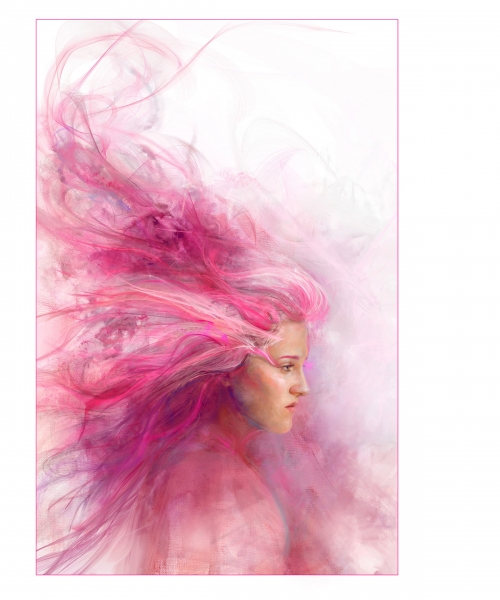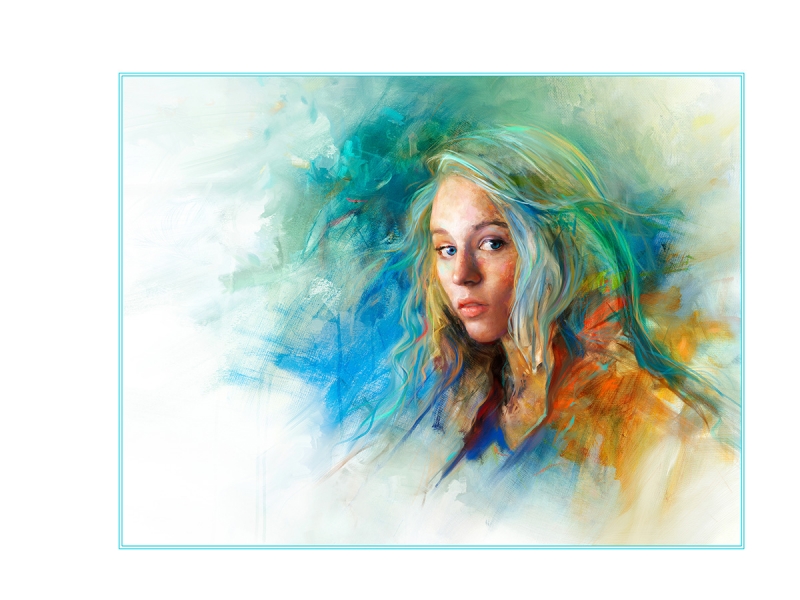Heather Chinn’s hand painting adds value, artistry, and profits
Heather Chinn hand paints photographs for photographer clients
• October 2018 issue
Heather Chinn, M.Photog.M.Artist.Cr., (aka Heather the Painter) is a ghost. A friendly ghost, to be sure, one who slips in behind photographers to enhance their work with artistic embellishments that can dramatically increase the value of their work. Specializing in both digital painting and hand painting with oils, she has worked her way to a prosperous career as an artistic collaborator and teacher.

Chinn went to art school in the early 2000s to be a painter. After one semester, she did a reality check and realized that she was on course to graduate with a degree in fine art and $125,000 in debt. She dropped out and took a job in a photography studio, where she learned the ins and outs of the trade while continuing to fine-tune her painting techniques.
Around this time, Corel Painter was starting to make waves in the photography field. It was a new phenomenon, and not many photographers knew how to use the software. Chinn saw an opportunity for a business helping photographers enhance their art through painterly effects as well as hand painting on canvas.
She took examples to all the photographers in her area and showed them how she could enhance their work. She walked them through the process and showed them how painted enhancements could provide a profitable new product line. “A lot of people shut the door on me, but a few people gave me a chance,” recalls Chinn. “They gave me some beautiful children’s portraits, and I painted those into works of art.”
Chinn then got involved with local PPA chapters in North Carolina and Virginia and started attending Imaging USA. In 2006, she submitted several pieces to the Corel book “Painter,” and some were selected for publication. The visibility of that work led to more in-terest from photographers and eventually to teaching. Doors opened and Chinn walked through them, building a nationally recognized painting and teaching business along the way.

The process
For the most part, the process is a matter of Chinn matching her painting to the photographer’s style. There needs to be some artistic synergy. If not, she’ll refer them elsewhere. Some photographers are very specific about what they want, requesting particular types of brushwork, coloring, and styling. Others (about 30 to 40 percent, she estimates) have no preconceived ideas about style. They just want to integrate some painterly effects in their offerings. So Chinn works with them to determine the right mix for their target market and subject matter.
The sales
For oils on canvas, she creates an “underpainting” as a digital file and sends it to her clients to make sure they’re on the same page. From there, the work moves to hand painting on museum-grade canvas mounted on acid-free backboard. The result is a high-end product that stands alone as a unique piece of art. Chinn’s clients are essentially commissioning a full oil portrait as if they were commissioning an oil painter to create something from scratch. Wholesale prices for the work start at $400 per square foot.Chinn begins her work with raw image files or occasionally color-corrected JPEGs. For digital paintings, she does her work and then delivers her clients digital proofs they can review to provide feedback. From there, she makes adjustments and sends the final files.
On average, Chinn’s photographer clients mark up her digital painting work by at least 300 percent. Oil on canvas paintings have similarly high profit margins, with studios charging four or even five figures for a finished work. “I encourage people to make the oil paintings their top-tier product,” says Chinn. “It’s an exclusive item that sets studios apart and opens them up to a new clientele that may not have previously set foot in their studio.”

Both digital painting and oils on canvas distinguish professional photographers from the mass of lower-priced, fast-turn photographers competing for portrait photography business. Shoot-and-burn photographers aren’t creating images like this, which come on archival materials with unique, hand-finished touches that can’t be duplicated by a batch process or Photoshop filter.
For photographers who want to try their hand at digital painting, Chinn offers workshops and other training. Pros with several years of Photoshop under their belts generally find it a smooth transition to work with Corel Painter, Chinn says.
After they’ve mastered the techniques and are ready to offer digital painting to their clients, the key for photographers is to understand their overhead and the value of their time. “This can be time-consuming work and so it should be treated as a premium product,” she says. “If you position it correctly, it can distinguish you from your competitors and provide a new source of revenue.”
Jeff Kent is editor-at-large of Professional Photographer.


 View Gallery
View Gallery


